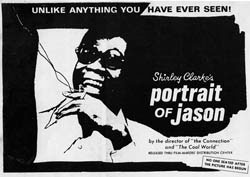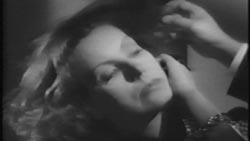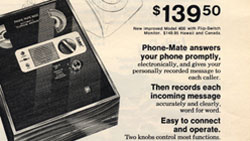
. . . PROJECTS:

PORTRAIT OF TURNER [2009, HD/SD video, 55 min.]
Portrait of Turner re-enacts Shirley Clarke’s original screen experiment, Portrait of Jason (1967) —what happens when one performer narrates his life story for the camera over a 12 hour period, as time, fatigue, intimacy, and conflict shape the quality of the performance and even its documentation? Portrait of Turner is not a remake but a test re-staged. Made in collaboration with Atlanta based performance artist Scott Turner Schofield, Portrait of Turner seeks to animate questions of realism and authenticity in relation to Turner’s particular identity (white, southern, middle class, performance artist, female to male transgender) but also in terms of contemporary nonfiction practice. The film asks a familiar set of questions in a new historical moment: What is an "authentic" performance? What is "realism"? What is a “positive” or “negative” image? Re-posing questions that also animated Clarke’s film, Portrait of Turner challenges its audience to reflect on its own, sometimes pleasurable and sometimes uncomfortable, relation to the figure before the camera.
Nationally acclaimed performance artist and "movie star wannabe"
Scott Turner Schofield crafts his onscreen persona here through a series
of performances that stage his desires to perform, to be loved, and to
be seen. As he talks to the camera, Turner also interrogates the history
and meanings of his own body—a body self-consciously formed and
mediated by medicine, desire, and by radical and assimilationist cultural
politics.
Part interview, part autobiographical monologue, part “screen test,”
Portrait of Turner uncovers the labor of a queer self and reveals
the essential role of narrative and performance in building lives onscreen
and off.
rou

"Putting Things to the Test: Reconsidering Shirley Clarke's Portrait of Jason" [Fall 2009] forthcoming Camera Obscura
My analysis now considers the various overlapping discursive spaces Portrait of Jason [USA, Shirley Clarke, 1967] occupies --as critical interrogation of documentary languages of realism and truth, as one of the very first American representations of a self-identified black gay man, and as historical document--- within a history of how it has traveled from the production space of Clarke’s 1966 Chelsea Hotel penthouse to the present. As such, the essay is not a specifically textual analysis of the film, rather it is a consideration of the film text across its exhibition life, across the careers of Clarke and Holliday, and within its particular representation of race, gender, and sexuality. My analysis of Portrait of Jason necessarily examines the particular intersections of documentary cinema and historiography, spectatorship, and textual analysis. As a way to recuperate the film’s critical impulse I argue that Portrait of Jason is a “screen test”. The form of the film’s critique is in fact a “test,” a test of “seeing.” A “test” is a place where knowledge is confirmed, where phenomena are disciplined within the boundaries and categories of what is known and knowable. But the test is also a place that pushes hard against the seams of reality, always threatening to ask questions that don’t yet have answers. Or summon answers that make us think about the questions in ways we had not expected.

INCOMING MESSAGES [2007, HD/SD video, 25 min.]
Crafted from answering machine cassettes collected at thrift stores between 2003 and 2005, Incoming Messages examines the analog answering machine at the end of its life. Once the most widely used sound recording device in the United States--- millions of recordings were made each day, each minute, each second--- the analog machine is now outmoded, uneasily coexisting with newer media and our seemingly endless desire for constant improvement. But what can looking at outmoded technologies teach us about ourselves in the past, the present or even the future?

Notes on Screen Testing” Journal of Visual Culture, Vol. 6, No. 1 [Spring 2007] Special Issue: “Detritus and the Moving Image”
Through an analysis of three screen tests: screen tests conducted in 1948 by Columbia Pictures to cast Amos and Andy when the popular series moved from radio to televison; a hand held novelty toy; Greta Garbo's screen test for a film never made--this essay considers the screen test and screen testing as modes of knowledge production.

“Longing
at the Found and Lost: Telephones with a Memory” Spectator,
Volume 26, No. 2 [Spring 2006]
Special Issue: Ephemeral Cinema, Invisible Media: Sound and Image at the
Edge of Awareness
With an emphasis on the continuities between text and context, the essay explores the analog answering machine cassette through a consideration of its production, use, and reception. Where are cassette answering machine tapes found and how does that context produce meaning at the site of reception?

SCREEN TEST NO. 1, NO.2, NO.3 [1998-2002, FILM/VIDEO, 12 min.]
In their Screen Test series, Julia Zay and Irene Gustafson use film and video to create phantom limbs of pre-existing films. Screen Test No.1 imagines a double life for a cherished American cultural icon--the boy from the 1954 film, Lassie. Screen Test No.2 takes its cue from 1950s Hollywood melodrama, exploring the character of a middle-aged woman who takes a bath. Screen Test No.3 reinterprets a 1957 filmed studio personality test for actress Tuesday Weld. Through a fragmented attention to details of gesture, facial expression, costume, and setting, each Screen Test becomes the original film’s own dream of itself as something else.

